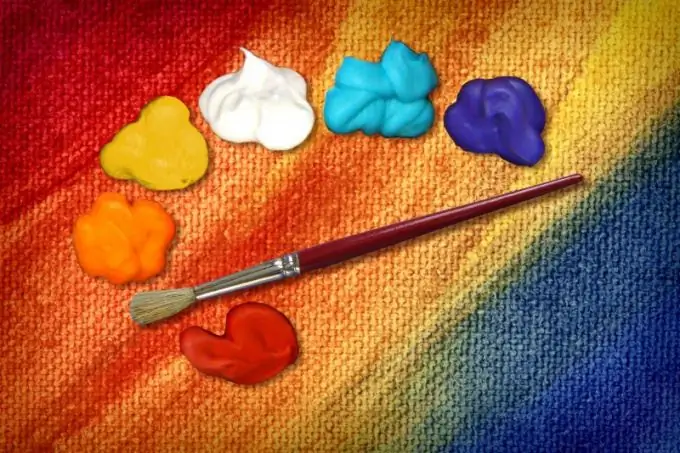There is a widespread belief that it is necessary to start learning drawing and painting as early as possible. Confirmation seems to be in the biographies of famous artists: indeed, many of them began to study in early childhood. But there are no rules without exceptions, and even some great painters began to master the skill when they were already adults. So do not resist if you suddenly have an irresistible urge to paint.

It is necessary
- - paper;
- - paints;
- - the pencils;
- - brushes;
- - pastel;
- - coal;
- - sanguine;
- - table lamp;
- - postcards with pictures;
- - manual for teaching perspective;
- - geometric bodies (you can use a child builder);
- - reproductions from paintings by great artists.
Instructions
Step 1
Learning will go faster under the guidance of an experienced teacher. So look for the right courses or studio to get started. They can be at your local community center. Many children's art schools also open departments for adults. Yes, training, as a rule, is paid, but the price is quite affordable even for a not very wealthy person. Maybe there is an amateur association in your city where good artists share their experiences with beginners. In large cities, you can also find special training courses in drawing for lovers of embroidery, knitting or designing clothes.
Step 2
Unfortunately, courses and studios are not available everywhere, so it is possible that you will have to study on your own. Well, nothing is impossible. Start by purchasing materials. You don't need much at first. Paper, pencils of different softness, colored pencils, wax crayons - that's probably all. You can wait with paints. You will need paper in different sizes. By the way, it is not necessary to buy a special set for watercolors yet. If you have some paper wallpaper left after the repair, use it.
Step 3
It is better to start drawing with the simplest. For example, with geometric shapes. Draw a square in the center of the sheet. Try not to shake your hand. This is a psychological moment common to many beginners. If your square is crooked, nothing will happen in the world, you won't even get an unsatisfactory grade. You just draw a new one or touch up this one. Try not to use an eraser. Use it only in cases where the error cannot be hidden with lines or shading.
Step 4
Experiment with squares. Draw a large and small, many small, large in different parts of the sheet. Draw a square in an oblique position. Try turning one of the squares into a cube. For this, of course, you need to know a little about the laws of perspective, but they can be found in any textbook on academic drawing. Try to convey the shape with shading. Note that areas close to the viewer appear lighter than areas that are far away.
Step 5
Draw other geometric shapes - rectangle, triangle, circle, trapezoid. Turn them into a box, a cone, a ball, a truncated cone.
Step 6
Place a few simple objects of different shapes in front of you. Place a table lamp next to it. Take a close look at where the light and dark areas are located on the surfaces. Move the lamp and watch how the position of the light and shadow changes. Try drawing objects in different lighting conditions.
Step 7
Learn to sketch from postcards. There is nothing wrong with that, because even the great masters mastered the skills they needed by copying the works of their predecessors. First, choose illustrations for fairy tales that are simple in composition. Determine the location of the composition and the position of the objects relative to each other. Analyze the shape of each piece. You will be convinced that almost all the details are in the form of geometric shapes already familiar to you, and you just have to correctly determine their ratio.
Step 8
Once you've learned how to sketch with a pencil, move on to other types of techniques. For drawing, you can use charcoal or sanguine. As for paints, their choice must be approached very carefully. Ironically, the most popular watercolor technique is one of the most difficult. It is better to start with gouache, then master oil, and then move on to working in watercolor.






